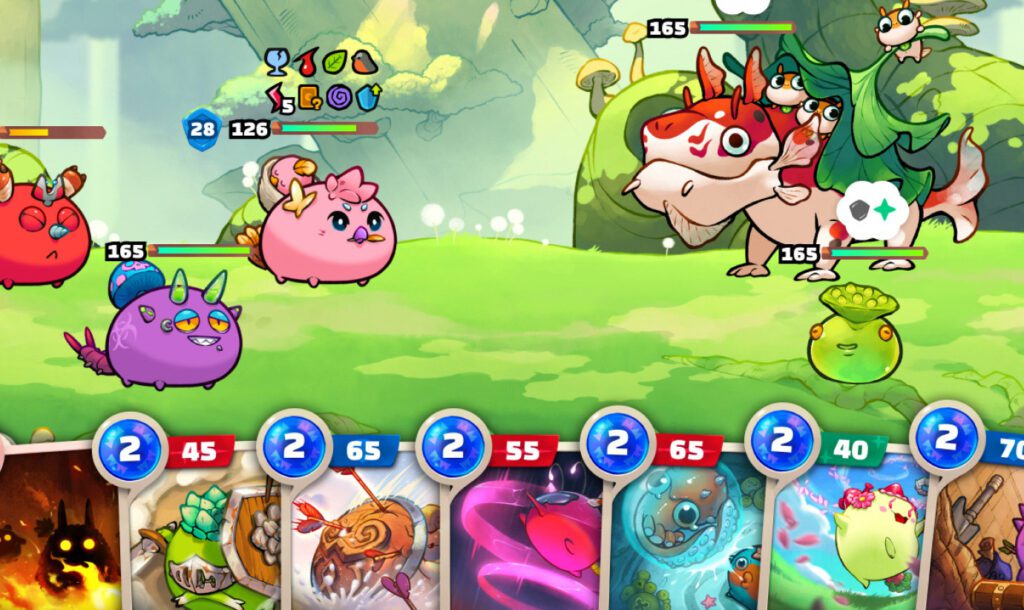The intersection of blockchain technology and game design has ushered in a new era of interactive entertainment, where players not only engage with virtual worlds but also possess tangible assets within them. As the gaming industry evolves, the role of the blockchain game designer becomes increasingly critical. This article delves into the intricacies of blockchain game design, exploring the unique challenges and opportunities it presents, while also highlighting real-world examples and relevant statistics.

Understanding Blockchain Technology in Gaming
Blockchain technology, at its core, is a decentralized ledger that records transactions across multiple computers. This ensures that the recorded transactions cannot be altered retroactively, providing a level of security and transparency that traditional gaming systems lack. In the context of gaming, blockchain enables the creation of non-fungible tokens (NFTs), which represent ownership of unique in-game assets. According to a report by DappRadar, the blockchain gaming sector saw a staggering 2.5 million daily unique active wallets in Q3 2021, a 162% increase from the previous quarter (DappRadar, 2021).
The Role of a Blockchain Game Designer
A blockchain game designer is responsible for integrating blockchain technology into the game development process. This involves not only traditional game design principles but also a deep understanding of blockchain mechanics, smart contracts, and tokenomics. The designer must create engaging gameplay experiences while ensuring that the economic model is sustainable and rewarding for players.
Key Components of Blockchain Game Design
1. Game Mechanics and Tokenomics
Tokenomics refers to the economic model of a game, including how tokens are created, distributed, and utilized within the game ecosystem. A well-designed tokenomics model can incentivize player engagement and retention. For instance, Axie Infinity, a popular blockchain-based game, utilizes a dual-token system: Axie Infinity Shard (AXS) and Smooth Love Potion (SLP). Players earn SLP by participating in battles and completing quests, which can then be traded on various exchanges. As of October 2023, Axie Infinity has generated over $4 billion in total sales, showcasing the potential of effective tokenomics (Axie Infinity, 2023).
2. Smart Contracts
Smart contracts are self-executing contracts with the terms of the agreement directly written into code. In gaming, they can automate various processes, such as asset transfers, rewards distribution, and governance mechanisms. For example, in Decentraland, a virtual reality platform powered by the Ethereum blockchain, smart contracts govern land ownership and transactions. Players can buy, sell, and develop virtual land, with all transactions securely recorded on the blockchain. This not only enhances trust but also allows for a decentralized governance model where players can vote on platform changes (Decentraland, 2023).
3. User Experience and Accessibility
While blockchain technology offers numerous advantages, it also presents challenges in terms of user experience. Many players are unfamiliar with cryptocurrency wallets and blockchain transactions, which can create barriers to entry. A successful blockchain game designer must prioritize user-friendly interfaces and onboarding processes. For instance, games like The Sandbox have implemented simplified wallet creation and in-game tutorials to help new players navigate the blockchain landscape (The Sandbox, 2023).
Real-World Examples of Successful Blockchain Games
1. Axie Infinity
As previously mentioned, Axie Infinity has become a benchmark for blockchain gaming success. The game allows players to breed, raise, and battle creatures called Axies, which are represented as NFTs. The game’s play-to-earn model has attracted millions of players, particularly in regions like Southeast Asia, where players can earn a significant income through gameplay. The economic impact of Axie Infinity has been profound, with reports indicating that some players earn more than the average local salary (The Guardian, 2021).

Players breed, battle, and earn through Axie Infinity’s NFT system.
2. CryptoKitties
CryptoKitties was one of the first blockchain games to gain mainstream attention. Launched in 2017, it allows players to collect, breed, and trade virtual cats, each represented as a unique NFT. The game famously congested the Ethereum network shortly after its launch, highlighting the scalability challenges associated with blockchain gaming. Despite its initial hype, CryptoKitties has paved the way for future blockchain games by demonstrating the potential for unique digital ownership (CryptoKitties, 2023).
3. The Sandbox
The Sandbox is a decentralized virtual world where players can create, own, and monetize their gaming experiences. It combines user-generated content with blockchain technology, allowing players to build and share their own games using the platform’s tools. The Sandbox has attracted partnerships with major brands and celebrities, further solidifying its position in the blockchain gaming space. As of October 2023, The Sandbox has raised over $93 million in funding, indicating strong investor confidence in the platform’s potential (The Sandbox, 2023).
Challenges in Blockchain Game Design
1. Scalability Issues
One of the most significant challenges facing blockchain game designers is scalability. As more players engage with a game, the demand for transactions increases, which can lead to network congestion and high gas fees. For example, during peak times, Ethereum gas fees have soared to over $100 per transaction, making it economically unfeasible for casual players to participate (Ethereum Gas Tracker, 2023). Solutions such as layer-2 scaling solutions and alternative blockchains like Polygon and Solana are being explored to address these issues.
2. Regulatory Concerns
The regulatory landscape surrounding blockchain gaming is still evolving. Issues related to gambling laws, securities regulations, and consumer protection are all areas of concern for game developers. For instance, the U.S. Securities and Exchange Commission (SEC) has scrutinized various blockchain projects to determine whether they qualify as securities, which could impose additional compliance burdens on game developers (SEC, 2023).
Future Trends in Blockchain Game Design
As the blockchain gaming industry matures, several trends are likely to shape its future. The integration of artificial intelligence (AI) and machine learning could enhance gameplay experiences by creating more dynamic and responsive environments. Additionally, the rise of cross-platform play and interoperability between different blockchain games will allow players to transfer assets seamlessly across various ecosystems. According to a report by Newzoo, the global gaming market is expected to reach $218.7 billion by 2024, with blockchain gaming playing a significant role in this growth (Newzoo, 2023).
Conclusion
The role of a blockchain game designer is multifaceted, requiring a blend of traditional game design skills and a deep understanding of blockchain technology. As the industry continues to evolve, designers must navigate challenges such as scalability and regulatory concerns while leveraging the unique opportunities presented by blockchain. Successful examples like Axie Infinity and The Sandbox demonstrate the potential for innovative gameplay experiences that empower players through true ownership of digital assets. As we look to the future, the integration of AI and cross-platform capabilities will further enhance the blockchain gaming landscape, making it an exciting field for both developers and players alike.

